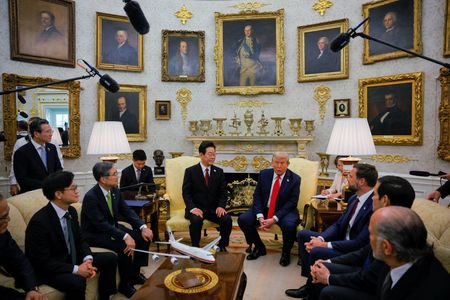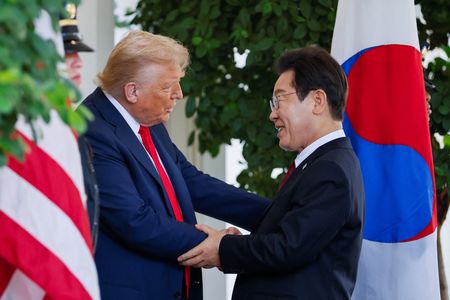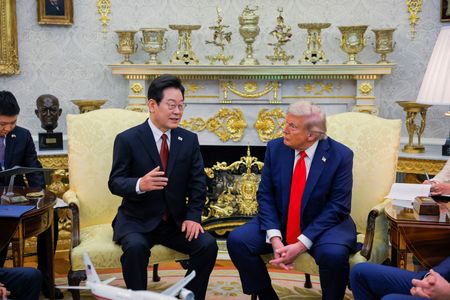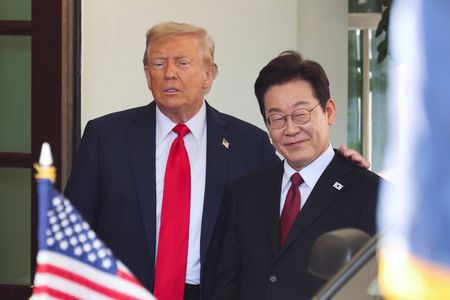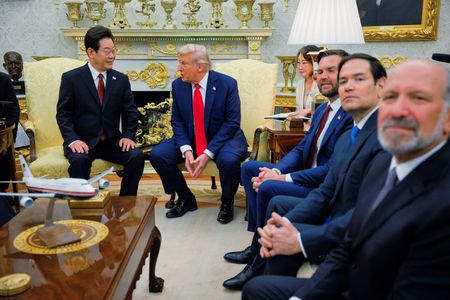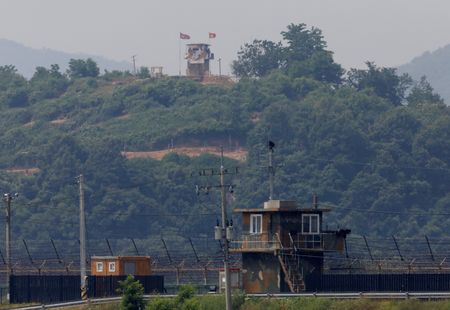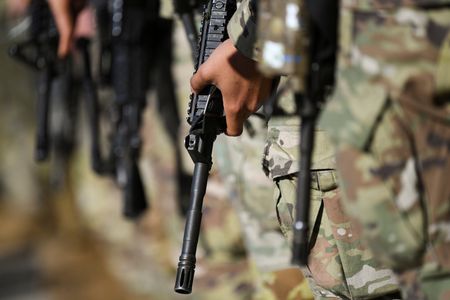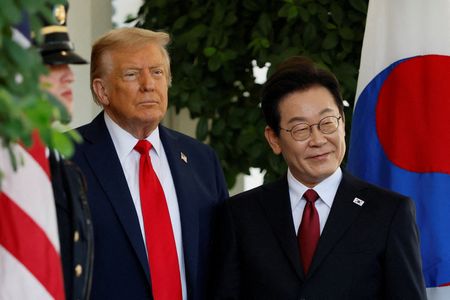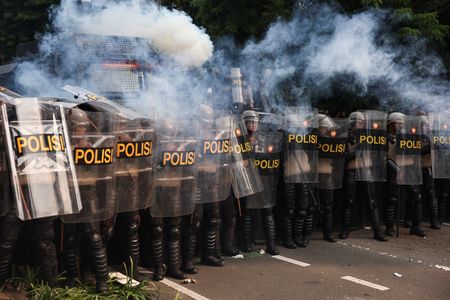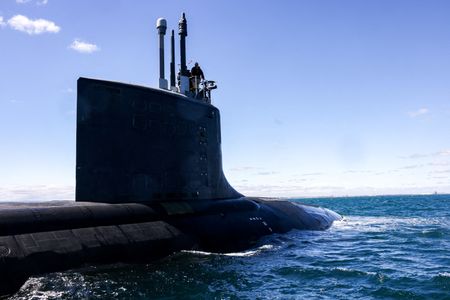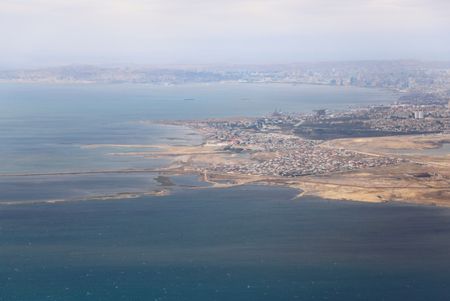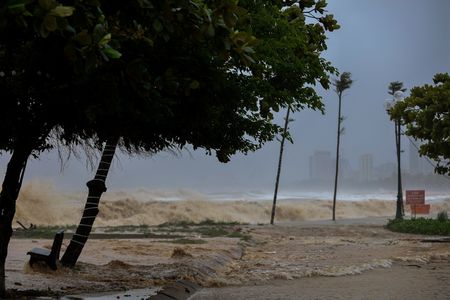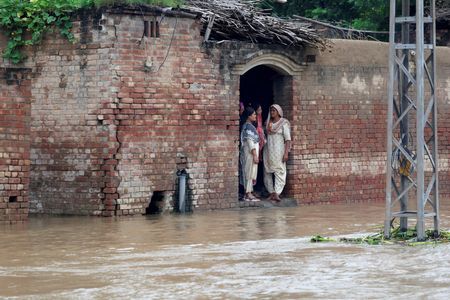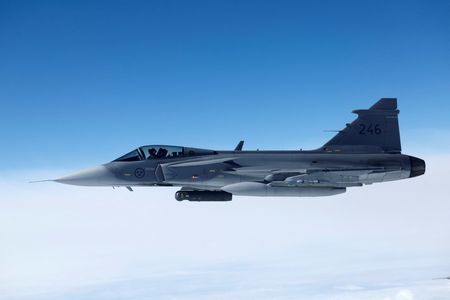By Steve Holland, Hyunjoo Jin, David Brunnstrom and Trevor Hunnicutt
WASHINGTON/SEOUL (Reuters) -U.S. President Donald Trump said on Monday he wanted to meet with North Korean leader Kim Jong Un this year and that he was open to further trade talks with South Korea even as he lobbed new criticisms at the visiting Asian ally.
“I’d like to meet him this year,” Trump told reporters in the Oval Office as he welcomed South Korea’s new president, Lee Jae Myung, to the White House. “I look forward to meeting with Kim Jong Un in the appropriate future.”
Trump and Lee held their first meeting in tense circumstances. Trump lodged vague complaints about a “Purge or Revolution” in South Korea on social media before later walking those back as a likely “misunderstanding” between the allies.
Despite clinching a trade deal in July that spared South Korean exports harsher U.S. tariffs, the two sides continue to wrangle over nuclear energy, military spending, and details of a deal that included $350 billion in promised South Korean investments in the United States.
After meeting with Trump, Lee attended a business forum with senior U.S. administration officials and CEOs of South Korean companies and more than 20 U.S. firms, including the Carlyle Group, Nvidia, Boeing, GE Aerospace, Honeywell, and General Motors.
Sources told Reuters South Korea’s flag carrier, Korean Air, was expected to announce an order for about 100 Boeing aircraft.
KIM IGNORES TRUMP CALLS
North Korea did not immediately respond to a request for comment on Trump’s remarks. Its state media said later that U.S.-South Korea joint military drills proved Washington’s intention to “occupy” the Korean peninsula and target countries in the region.
Since Trump’s January inauguration, Kim has ignored Trump’s repeated calls to revive the direct diplomacy he pursued during his 2017-2021 term in office, which produced no deal to halt North Korea’s nuclear program.
North Korea’s rhetoric has ramped up, with Kim pledging to speed his nuclear program and condemning joint U.S.-South Korea military drills. Over the weekend, Kim supervised the test firing of new air defense systems.
In the Oval Office, Lee avoided the theatrical confrontations that dominated a February visit by Ukrainian President Volodymyr Zelenskiy and a May visit from South African President Cyril Ramaphosa.
Lee, deploying a well-worn strategy by Trump’s foreign visitors, talked golf and lavished praise on the Republican president’s interior decorating and peacemaking. He told reporters earlier that he had read the president’s 1987 memoir, “Trump: The Art of the Deal,” to prepare.
Lee’s office said he and Trump discussed shipbuilding and that Trump stressed his support for Lee. It said they also talked about assassination attempts against them. The office said the mood for the meeting was such that a written joint statement was unnecessary.
In the Oval Office, the liberal South Korean encouraged Trump to engage with North Korea.
“I hope you can bring peace to the Korean Peninsula, the only divided nation in the world, so that you can meet with Kim Jong Un, build a Trump World (real-estate complex) in North Korea so that I can play golf there, and so that you can truly play a role as a world-historical peacemaker,” Lee said, speaking in Korean.
South Korea’s economy relies heavily on the U.S., with Washington underwriting its security with troops and nuclear deterrence. Trump has called Seoul a “money machine” that takes advantage of American military protection.
DIFFICULT ISSUES
Trump has been pressing Seoul on the trade deal they already reached and on issues related to the bilateral military alliance.
After meeting with Lee, Trump told reporters: “I think we have a deal done” on trade. “They had some problems with it, but we stuck to our guns … They’re gonna make the deal that they agreed to make.” He did not elaborate, and the White House did not immediately respond to a request for comment.
Trump said while sitting with Lee he would raise “intel” he had received about South Korean investigations he said targeted churches and a military base. The White House did not respond to a request for more information.
This month, Seoul police raided Sarang Jeil Church, headed by evangelical preacher Jun Kwang-hoon, who led protests backing Lee’s ousted predecessor Yoon Suk Yeol.
In July, prosecutors investigating Yoon’s attempt to declare martial law served a search warrant on the Korean part of a military base jointly operated with the United States. South Korean officials have said U.S. troops and materials were not subject to the search.
South Korea’s far-right movement, especially evangelical Christians and Yoon supporters, sees him as a victim of communist persecution.
Trump was expected to pressure Lee to commit to more defense spending, including toward upkeep of the 28,500 U.S. troops in South Korea.
Asked if he would reduce those numbers to give the U.S. more regional flexibility, Trump said: “I don’t want to say that now,” but that maybe Seoul should give the U.S. ownership of the “land where we have the big fort,” an apparent reference to Camp Humphreys, a U.S. Army garrison in South Korea.
Before the meeting, Lee told reporters it would be difficult for Seoul to accept U.S. demands to adopt such “flexibility” – a reference to using U.S. forces for a wider range of operations, including China-related threats.
Lee wants to chart a balanced path of cooperation with the U.S., while avoiding antagonizing China, Seoul’s top trade partner. Even as he headed to Washington, he sent a special delegation to Beijing, which delivered a message calling for normalized ties.
Lee will highlight some of South Korea’s expected U.S. investments when he visits a shipyard in Philadelphia owned by the country’s Hanwha Group on Tuesday.
Trump is expected to attend the Asia-Pacific Economic Cooperation summit in South Korea on October 30-November 1.
(Reporting by David Brunnstrom, Idrees Ali, Steve Holland, Trevor Hunnicutt and David Shepardson in Washington and Josh Smith, Hyun Joo Jin, Ju-min Park and Jack Kim in Seoul; Writing by Josh Smith and Trevor Hunnicutt; Editing by Lincoln Feast, Ed Davies, Michael Perry, Rod Nickel)

